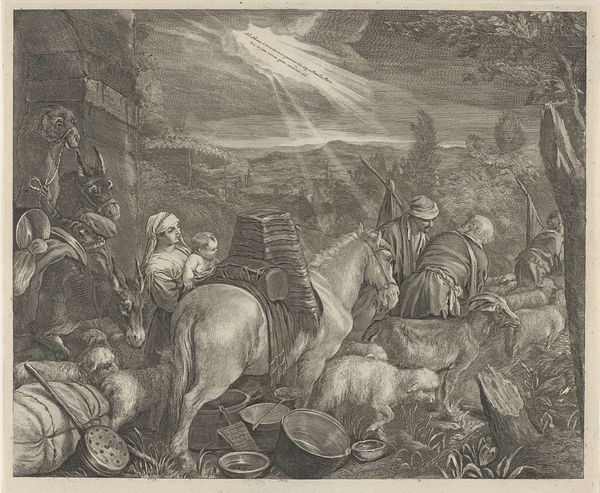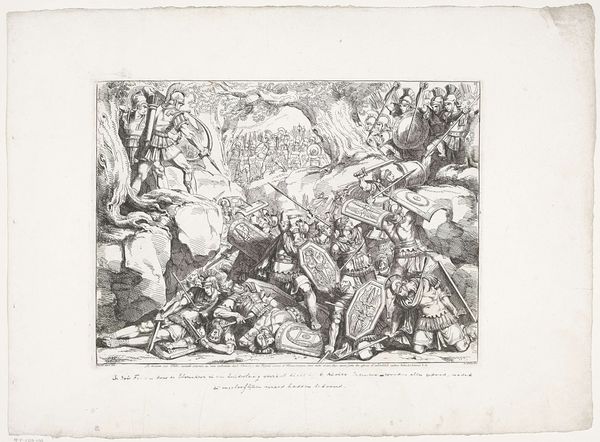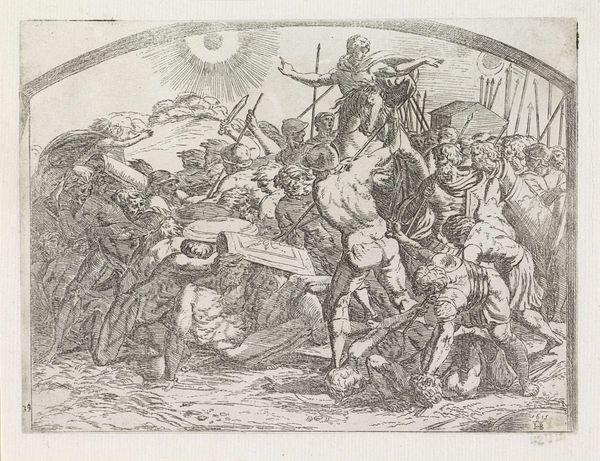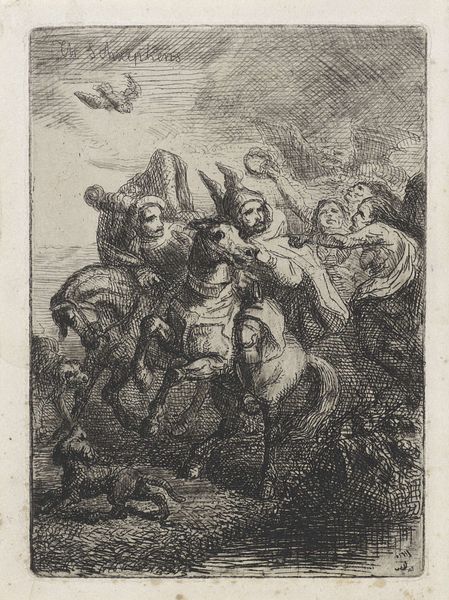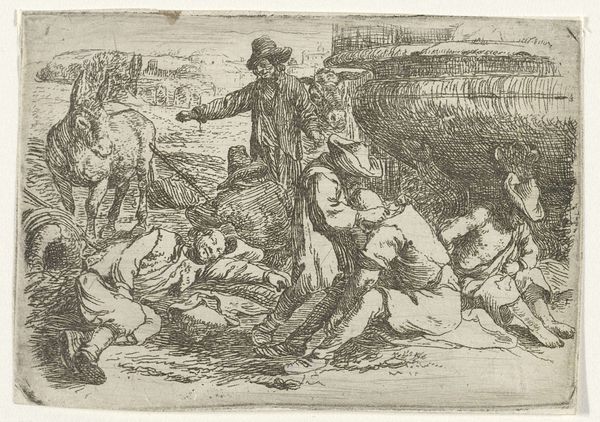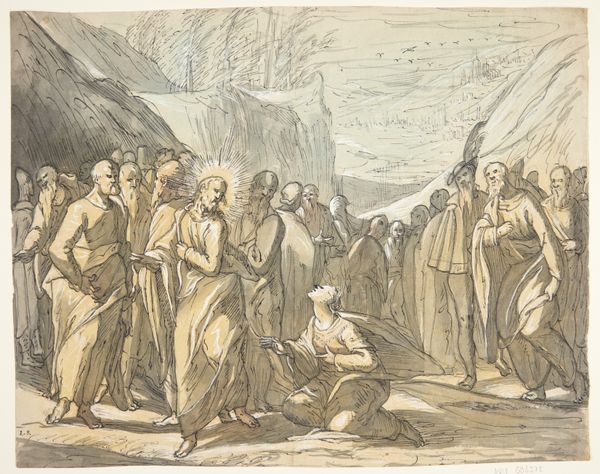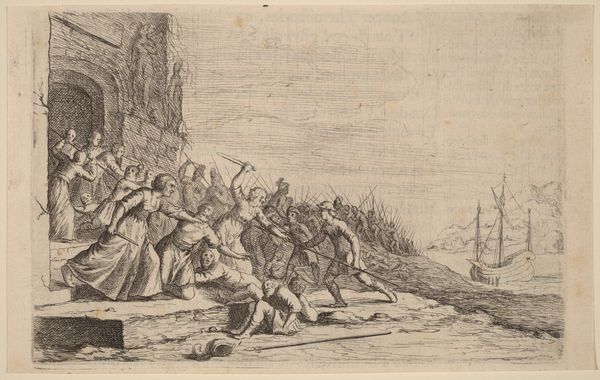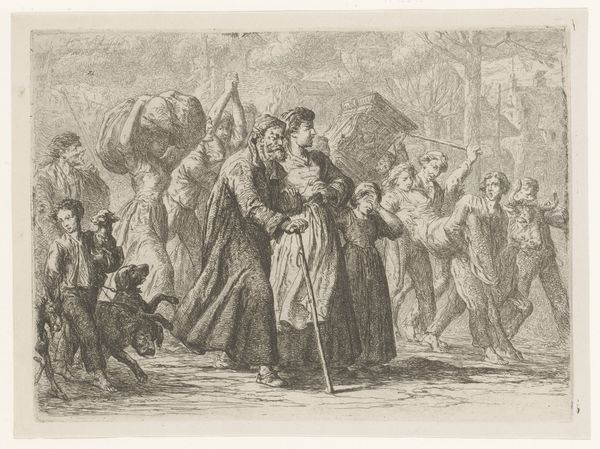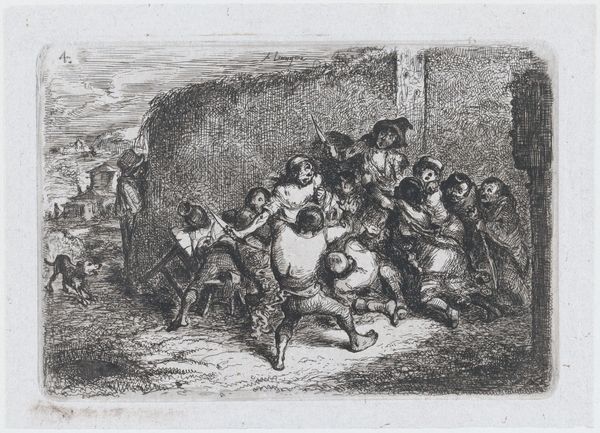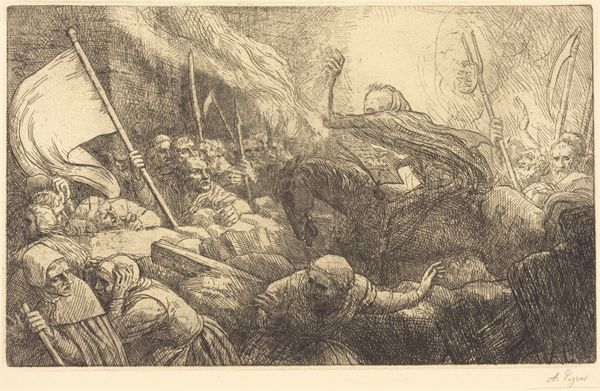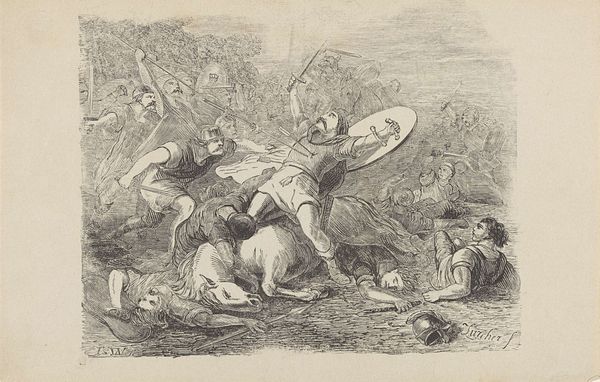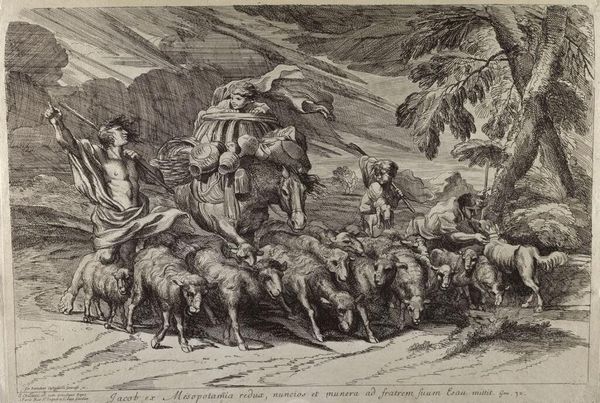
print, graphite
#
pencil drawn
# print
#
pencil sketch
#
charcoal drawing
#
pencil drawing
#
pen-ink sketch
#
graphite
#
cityscape
#
genre-painting
#
realism
Dimensions: image: 277 x 365 mm sheet: 390 x 540 mm
Copyright: National Gallery of Art: CC0 1.0
Curator: Cecil Bell's print, "Skaters, Central Park," dating from around 1932, offers a fascinating glimpse into urban leisure. What's your initial reaction? Editor: The density of the graphite creates a scene that feels both vibrant and slightly claustrophobic. The frenetic energy almost anticipates the abstract expressionism that would soon follow. Curator: That energy certainly reflects a bustling cityscape, a theme so prominent in American art of that period. The print depicts various figures enjoying a winter day; how do you view the artist’s engagement with social context? Editor: Well, Bell's technique— the varied strokes of graphite suggesting movement and light— reflects not only observed realism, but also an underlying geometric scaffolding: see the compositional structure in the buildings, or the curve of the bridge echoed elsewhere in the drawing. Curator: Yes, the forms suggest observation combined with subtle architectural precision, almost as a symbolic rendering of social hierarchies during the Depression. Note how figures intermingle despite possible class differences. This could highlight the communal experience that parks offer during difficult times. Editor: I would suggest that we delve into semiotics, and the use of recurring circular motifs. Beyond their mimetic function depicting people skating or architectural elements, those forms create unity while hinting at ceaseless movement in both physical and societal terms. Curator: Very insightful! That cyclical reading underscores the historical understanding of how such spaces acted for societal gatherings. Perhaps we can even extrapolate Bell's intentions in presenting scenes from New York's Central Park as part of genre painting traditions. Editor: Considering that, our visual parsing combined with contextual data offers layers to interpretation. Now, while understanding social function adds validity, remember that analyzing through structural components and visual signs holds true value in unraveling messages behind art's creation and reception... Curator: Agreed. I find, as well, that examining public works of art in periods such as the 1930's can shed light upon various forms of negotiation among different members living within larger cultural and financial climates that might otherwise be lost had one viewpoint remained prioritized over all others . Editor: This exercise underscores just how diverse readings emerge depending upon lenses employed through either formalism principles centered within materials used vs socio cultural viewpoints found when considering how audiences have interacted with that artwork across history and into modern memory practices both individually within cultural communities throughout collective spaces alike."
Comments
No comments
Be the first to comment and join the conversation on the ultimate creative platform.
